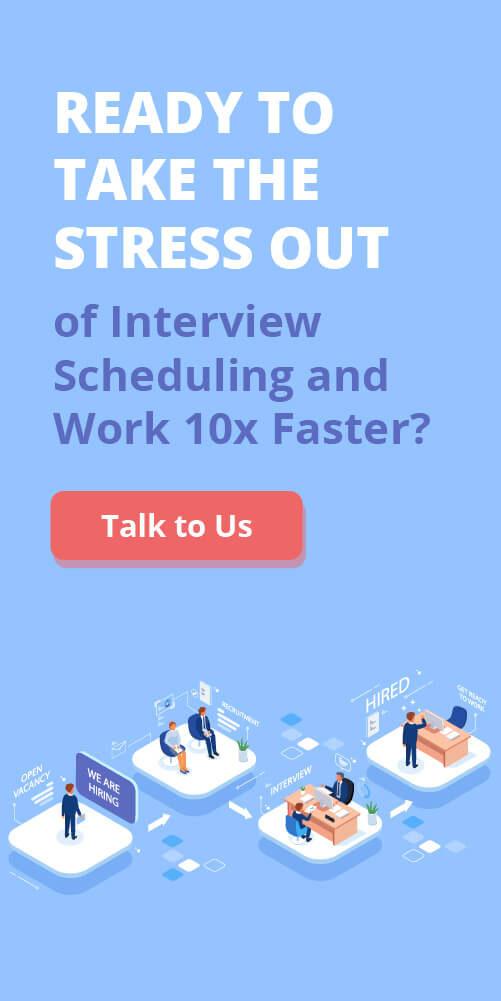As Gen Z steadily takes over the workforce, recruiters must adapt quickly to reach this digital-native generation.
By 2025, McKinsey forecasts that Gen Z to make up over 25% of the global workforce, and LinkedIn data indicate that attracting and retaining Gen Z talent is already the #2 challenge for talent teams in the next five years.
Source: Five Fifty: Solving for Gen Z in the workplace | McKinsey
Unlike older cohorts, Gen Z was raised online and values authenticity, transparency, and growth. To maximize hiring ROI today, recruiters need more than a list of Gen Z job boards & platforms – they need a strategy built on how Gen Z searches, what content engages them, and which channels deliver quality hires most cost-effectively.
Gen Z Job-Search Behavior & Preferred Channels
Surveys show that traditional job boards still dominate Gen Z’s search, even as social tools grow.
In a late-2024 Gen Z survey, 88% of 1000 US & UK young respondents reported using online job boards to find jobs, far outpacing social media (28%) or even networking referrals (33%).
Likewise, a U.S. Gen Z workforce study found job boards (46%) and search engines (44%) were the most common ways Gen Z finds roles.
💡 In other words, many Gen Z candidates still start with Indeed, LinkedIn, or employers’ career sites when hunting for jobs.
However, the tactics within those channels are shifting.
Search Engines and SEO
Nearly half of Gen Zers begin with Google or Bing, which often leads them back to job-board listings. Recruiters should ensure company career pages and posts are mobile-friendly and SEO-optimized (keyword-rich and skills-focused) so they rank high in these searches.
Social and Video
Even so, Gen Z is increasingly using social media as a search tool. One industry analysis found that about 62% of Gen Z prefer platforms like TikTok over Google to look up information.
On TikTok and Instagram, “day-in-the-life” or job-tutorial videos can garner ~2× more engagement than text-only posts. These short videos and authentic glimpses into company culture attract Gen Z far more effectively than traditional job descriptions.
Most recruitment marketing guides will advise using platforms like TikTok or Instagram for employer branding, since Gen Z actively researches companies there, whereas LinkedIn and Glassdoor tend to resonate more with Millennials.
💡 Taken together, these insights suggest a multi-pronged approach. Gen Z still starts on job boards, but they then validate and explore roles on social media.
💡 But don’t limit yourself to just TikTok and Instagram. Ever heard of Bluesky? Check out how Gen Z is using this emerging social platform and other new & rising social media channels to land interviews.
Recruiters who advertise on Indeed/LinkedIn and run engaging social campaigns will cover the gamut. Coming back to the high number of Gen Z job board users (88% out of 1000 US & UK young candidates), this is sending out a signal that traditional postings remain essential, but they must be complemented by savvy social and content strategies to capture Gen Z’s attention.
Platform-Specific Strategies for Gen Z

Recruiters should allocate effort and budget across three main categories of channels, tuning each to Gen Z’s habits:
Traditional Job Boards & Search (Indeed, Monster, LinkedIn, Glassdoor)
These channels remain the baseline channels for Gen Z. Ensure postings on these sites highlight the skills needed and provide clarity (e.g., salary ranges, remote options).
When you use data analytics to track each board’s performance, like cost-per-click (CPC), cost-per-application (CPA), and conversion rates (applicants-to-hires).
Remember that a low CPA means little if applicants aren’t qualified. CPA should always go hand-in-hand with the quality of hires per channel.
As one recruiting analyst notes,
“Cost per application is just one piece of the puzzle” – you must also look at start rates and hire quality. In practice, companies often find channels like Indeed deliver high volume, so they fill entry-level roles quickly, while niche job sites (e.g., StackOverflow Jobs for devs) supply specialized talent.
- Case in point: An unnamed enterprise campaign on TikTok (blending into the “social” category) filled 20 open roles in 2 weeks with triple the volume of board-sourced applicants and a CPA less than one-third of traditional methods. This shows that even for large companies, TikTok ads (organic or paid) can vastly outperform some boards on ROI when done right.
Campus & Early-Talent Platforms (Handshake Job Portal, College Fairs, University Career Centers)
Gen Z tends to start job-hunting early, often in college. Handshake and similar campus-focused platforms can be highly effective (though serving a narrower audience of students/recent grads).
If your roles target entry-level hires, allocate some budget to campus events and Handshake campaigns.
For example, Burns & McDonnell reports major ROI from Handshake: one full-funnel Handshake strategy yielded 231 hires for this engineering services firm.
💡 Keep this spend proportional – it pays off when building a pipeline of young professionals, but probably won’t replace broader job boards for experienced or diverse roles.
Social & Emerging Platforms (TikTok, Instagram, YouTube, Discord, Slack, Niche Communities)
This is the fastest-evolving category. Use social channels for employer branding and candidate engagement, not just ads.
On TikTok or Instagram Reels, film short employee testimonial videos, “a day in the life” clips, or tips for applicants. The Rakuna team has personally seen posts with #JobTok or industry tags see ~25% wider reach.
@sistermissions doing business together since day one #homesense #firstjob #money ♬ FEEL THE GROOVE – Queens Road, Fabian Graetz
Many Gen Zers discover companies here before they ever apply. While fewer Gen Zers report finding jobs on social (CVwizard says 28%), that channel still drives brand familiarity and can pre-qualify candidates. You can also run targeted TikTok ad campaigns by role or region, as the unnamed enterprise TikTok case we previously mentioned shows, this can yield high-qualified applicants at low cost.
Emerging tech communities also matter for certain skills. For tech roles, forums like GitHub, StackOverflow, or Slack/Discord groups can surface candidates who aren’t actively job-hunting on boards.
For example, some companies host virtual “hackathons” or coding challenges via Discord to engage Gen Z developers. While ROI here is harder to quantify, success in niche channels comes from focus: a moderated Slack channel of ~2000+ Gen Z VC and tech enthusiasts like Tech Leading Ladies or IndieHackers can offer a concentrated pool of candidates.
Bottom line: Don’t ignore these channels, but treat them as supplementary. Test with a small pilot budget, measure the quality of engagement, and only expand if candidate fit and engagement are high.
Optimizing Job Postings for Skills-Based Discovery

Gen Z job-seekers respond to clear, skills-focused posts rather than vague, experience-heavy descriptions. Industry research shows both job-seekers and employers are shifting to a skills-based model.
The 2024 TestGorilla report on Skill-based Hiring Landscape found: 94% of employers believe skills-based hiring predicts success better than, and 82% of younger candidates prefer this approach.
This means recruiters now have valid reasons to optimize postings for skill discovery:
- Explicit skills and keywords: List the actual skills or competencies required (e.g. “Python, SQL, project management”) instead of generic role names. Gen Z often searches by skill or topic. Use bullet points to highlight must-have skills, software tools, and certifications. Remove or minimize demands for years of experience if the role is entry-level, as many Gen Zers have cited “unrealistic requirements” as a top frustration.
- SEO and AI-friendly content: Incorporate synonyms and related terms so the ATS and search engines can match candidates. For example, include both “social media marketing” and “SMO” if relevant. Use short, scannable sentences and headings. Wherever possible, tie the skills to concrete outcomes (“Managed a team of X” or “Developed a feature using React.js”) – Gen Z wants to see impact and learning, not just tasks.
- Video and multimedia: As noted, Gen Z engages heavily with video content. Embedding a short “meet the team” or “office tour” clip in your job ad can increase engagement. According to Search Engine Journal, TikTok-style “day-in-the-life” videos attract ~3× the engagement of text postings. Even on LinkedIn or your career site, add a short video or carousel showcasing real employees. When posting on TikTok or Instagram, use relevant hashtags (#JobTok, #CareerGoals, etc).
- Transparency and values: Gen Z prizes honesty. State pay range and location clearly – a Monster survey found 52% of recent college grads won’t apply unless salary is shown. Also, highlight your company’s values and initiatives: you always have options to share how your team supports diversity, sustainability, or mental health. Talk to your company’s Employee Resource Group (ERG) for additional materials on these initiatives.
- Career growth: Emphasize learning and advancement, since Gen Z is uniquely focused on growth. LinkedIn Future of Recruiting report show Gen Z is about 36% more likely than other generations to prioritize advancement opportunities (and 34% more likely to value skill development). If you offer training programs, mentorship, or clear promotion paths, mention them explicitly. Phrases like “career development plan” or “training budget” can grab Gen Z’s eye.
Putting it into practice, your job post might start with a hook:
- (“Join our team of engineers building the future of AI!”)
Immediately follow with key skills:
- (e.g. “Required skills: Java, React, Agile”),
Then bullet out what the day looks like, and finally underline perks:
- (salary range, flex hours, learning stipends).
Always tailor the tone: keep it concise but enthusiastic, use first-person
- (“You’ll be part of a team that…”)
For a more detailed guide with copy-and-paste template, check out Rakuna’s:
Strategic Budget and Gen Z Job Boards Allocation

Maximizing ROI means not just where but how much and how you invest in each platform. Industry surveys suggest many employers still lack a strategic budget plan: in a 2024 Talent Tech Labs report, only about half of surveyed companies had a defined job-advertising budget strategy, while 25% had none and 25% didn’t know. To avoid waste, here is a guide to core actionable steps your recruitment team can consider
Actionable steps:
Audit and measure: Start by tracking key metrics per channel –
- Cost-per-application,
- Cost-per-hire,
- Time-to-fill,
- And candidate quality ratings.
💡 Here’s an extended list of core recruitment ROI (and the calculation formula) for your recruitment team
For example, if Indeed delivers thousands of clicks but very low interview rates, that high volume might not justify a bigger spend. Conversely, if a small paid TikTok campaign yields high-quality candidates at a quarter of the cost-per-hire, you should scale it up.
Role-based targeting: Don’t spread your budget evenly. Assign spend by role, seniority, and discipline.
- Entry-level or general roles might rely 60–70% on traditional boards (Indeed, LinkedIn Jobs, internal ATS) for volume.
- For specialized roles (e.g., software engineers, designers), earmark funds for targeted outreach – sponsor a relevant Discord/Reddit group, or a niche job board.
Campus talent sources like Handshake job portals, school career fairs, and college networks are specifically for internships and new grads. The key is matching candidate demographics:
- Campus initiatives for Gen Z interns;
- TikTok/Instagram branding for digital-savvy roles;
- Legacy job boards for broad outreach.
- Experiment and pivot: Set aside ~10–20% of the budget as a test fund. Use it each quarter to try an emerging channel or creative. For instance, run a small sponsored content series on TikTok or host a live Q&A on Instagram Stories. Compare performance and double-down where ROI appears strong. Since Gen Z behaviors shift quickly, schedule regular reviews (e.g., quarterly) to reallocate funds.
- According to Veritone, about 22% of companies already adjust budgets based on platform costs or performance, but many still “follow trends” without hard data.
- Don’t be complacent – if something works (like the TikTok case above), move more spend there. If it doesn’t, cut losses and try another strategy.
- Blend paid and organic: Social channels are a mix of both. Organic posts (e.g. company TikTok videos) cost more time than money, but they build brand. Paid ads on TikTok or Instagram let you target specific locations or interests. Likewise, LinkedIn and Facebook offer sponsored job posts and employer-brand ads. A smart budget uses both: for example, run paid LinkedIn ads for hard-to-fill roles, while regularly updating the company’s LinkedIn page with posts that attract followers. On TikTok, you might use paid ads for roles that need a high volume of applicants, while keeping an active organic presence (challenges, takeovers) to nurture a future pipeline.
In all cases, focus on ROI metrics: Industry practice suggests tracking cost-per-hire and time-to-fill alongside candidate quality. If your data tools (ATS, recruitment CRM, or analytics platforms) can tag hires by source, use that insight. Over time, shift the budget toward channels that deliver not just the cheapest applicants, but the hires who perform and stay.
Key Takeaways for Gen Z ROI
- Diversity of channels: Don’t rely on one “magic” platform. Gen Z searches across job boards, search engines, and social media. Combine broad-board ads (Indeed, LinkedIn) with targeted social campaigns (TikTok, Instagram) and niche/community outreach.
- Skills-first postings: Craft job descriptions that lead with skills and experiences, not buzzwords. Use clear, concise language and plenty of bullet points. List actual tools and competencies so the right candidates find you.
- Engaging content: Include videos, graphics, or interactive content wherever possible. Use platform-appropriate styles (short, snappy videos for TikTok, infographics for LinkedIn). Short clips, employee testimonials, or day-in-the-life snippets can drastically boost Gen Z engagement.
- Measure everything: Track cost, volume, and quality per channel. Set up dashboards through your ATS to compare performance. If one channel’s ROI dips, redistribute the budget. Given that ~25% of companies lack any budget plan, doing this even at a basic level will put you ahead.
- Iterate quickly: Gen Z trends can change in months. Survey data from reputable sources like NACE and SHRM are valuable guides, but also gather your own. After each quarter, gather hiring stats and candidate feedback. Ask new hires where they found you and what drew them in. Use those insights to refine ads, content, and spend.
By treating Gen Z recruiting as a data-driven marketing exercise, and by speaking to this generation in the formats they love and on job boards or platforms they prefer, your recruiting teams can significantly boost their hiring ROI. The payoff is not just more applicants, but better hires who stay longer – Gen Zers who joined a company they truly connected with are far more likely to become engaged, loyal employees.

Team Rakuna
The Rakuna Team comprises a diverse group of professionals hailing from various corners of the world.
With a passion to enable organizations to hire their next waves of talents, we are dedicated to help organizations stay updated on important recruiting technology and industry best practices.


